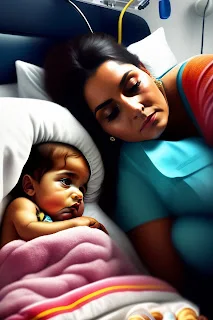What Is Women’s Maternal Mortality?
Maternal mortality refers to the death of a woman during pregnancy, childbirth, or within 42 days of delivery due to pregnancy-related complications. It is a key indicator of health equity and quality of care :contentReference[oaicite:3]{index=3}.
Global Snapshot: The Numbers
In 2023, around 260,000 women died from childbirth-related causes—equating to nearly one death every two minutes :contentReference[oaicite:4]{index=4}. Between 2000 and 2023, global maternal mortality dropped by about 40%, from 328 to 197 deaths per 100,000 live births :contentReference[oaicite:5]{index=5}.
Who Is Most Affected?
Over 90% of maternal deaths occur in low to lower-middle income countries, particularly in sub‑Saharan Africa and South Asia :contentReference[oaicite:6]{index=6}. In these regions, the likelihood of dying during childbirth can be more than 40 times higher than in high-income countries.
Main Causes of Maternal Death
Around 75% of maternal fatalities stem from:
- Severe bleeding (postpartum haemorrhage)
- Infections (including sepsis)
- Hypertensive disorders such as pre‑eclampsia and eclampsia
- Obstructed labour and complications during delivery
- Unsafe abortion procedures :contentReference[oaicite:7]{index=7}
Why Are These Deaths Preventable?
Most maternal deaths are avoidable with timely healthcare. Skilled birth attendants, emergency obstetric care, and postpartum monitoring drastically reduce risks :contentReference[oaicite:8]{index=8}.
Trends and Targets
The UN’s SDG 3.1 aims to reduce maternal mortality to under 70 deaths per 100,000 live births by 2030 :contentReference[oaicite:9]{index=9}. Several regions—like Eastern Europe and parts of Asia—have seen a 70–75% drop in MMR since 2000 :contentReference[oaicite:10]{index=10}.
Factors That Raise Risk
- Poor access to skilled birth attendants
- Weak emergency healthcare infrastructure
- Poor data collection and monitoring systems
- Social determinants—poverty, low education, gender inequality :contentReference[oaicite:11]{index=11}
Prevention Efforts That Work
- Quality antenatal, delivery, and postnatal care
- Access to emergency services including C‑section and transfusions
- Community education on warning signs and birth planning
- Addressing structural barriers—transport, financial support, workforce training
- Initiatives like WHO’s EPMM align with SDG goals :contentReference[oaicite:12]{index=12}
Impact of COVID‑19
The pandemic saw a spike of around 40,000 maternal deaths in 2021 due to disrupted services and infections, though later figures stabilised :contentReference[oaicite:13]{index=13}.
Country Spotlight: India
India's MMR fell by over 77% between 1990 and 2016, reaching 97 per 100,000 by 2020 :contentReference[oaicite:14]{index=14}. National schemes now emphasize antenatal care, facility-based delivery, and health education.
Real-Life Example
The Pradhan Mantri Matru Vandana Yojana (PMMVY) offers financial support for pregnant women in India, encouraging care-seeking and reducing maternal risk :contentReference[oaicite:15]{index=15}.
FAQs
- What is MMR? The maternal mortality ratio per 100,000 live births across a population.
- Are maternal deaths only due to medical issues? No. They reflect broader issues like access to healthcare and social inequality.
- How can countries reach SDG targets? By investing in healthcare systems, workforce training, and data-driven interventions.
Internal Links
Final Takeaway
Maternal mortality remains a global crisis—but one where knowledge and action can save lives. With improved care, education, and equity, every mother has the potential to survive—and thrive—during and after childbirth.

